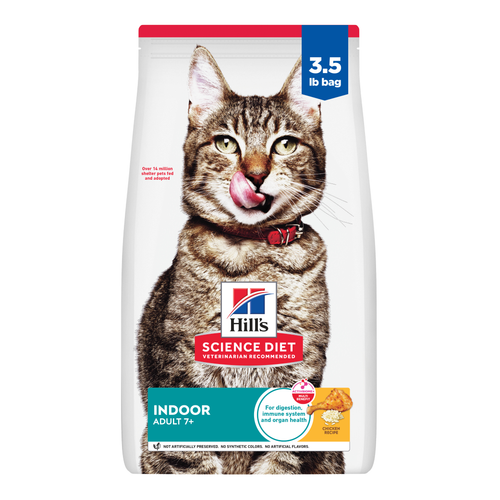

Canine dental extraction ranks high among the most common veterinary surgeries. One of the primary reasons for a tooth extraction in dogs is periodontal disease, also known as severe gum disease. Periodontal disease is very common, especially among older dogs.
Reasons Dogs Need Dental Extractions
There are many possible reasons why a dog might need a tooth extracted, periodontal disease being foremost among these. In the case of periodontal disease, bacteria infects and weakens the periodontal ligaments, the bits of tissue that tie each tooth to its underlying bone. Once this attachment is sufficiently weakened, infection can delve deeper, creating abscesses, or pockets of infection, between the tooth and bone. The tooth will eventually lose its bony mooring, become loose in its socket and fall out.
Because many teeth have multiple roots, each of which may be affected differently, severely diseased teeth can resist loss and remain solidly anchored as long as just one root remains relatively healthy. The longer a diseased tooth remains, however, the longer that an infection can persist.
Canine dental extraction is crucial in some cases. Once a diseased tooth is removed and the area is cleaned of infected debris, the dog can finally be relieved of the infection. Infections caused by periodontal disease are not only uncomfortable and smelly, but major organ systems are at increased risk of infection should bacteria from infected teeth enter the bloodstream.
Apart from periodontal disease, canine dental extraction can also be necessary in the cases of:
- Fractured teeth: Fractures in which the pulp of the tooth is exposed eventually result in infected roots and painful abscesses.
- Deciduous teeth: Also known as baby teeth, these should be removed to make room for healthy permanent teeth if they don't fall out by themselves.
- Oral trauma: Should a bone in the mouth break, tooth extraction may be necessary.
- Oral tumors: Treatment of tumors may involve extraction of nearby teeth.
Orthodontic abnormalities: Sometimes dogs have teeth where they don't belong.
Alternatives to Tooth Extraction in Dogs
Motivated dog parents may elect to investigate other ways of saving teeth. A root canal, a vital pulpectomy and pediatric orthodontic care are all potential options. However, your dog might not be a candidate for advanced procedures. These advanced procedures will likely require a consultation with a board certified veterinary dentist before scheduling the procedure. Extraction is typically necessary to treat infected roots.
How a Canine Dental Extraction Is Performed
Not all canine dental extractions are created equal. Every tooth is unique and presents its own challenges. Some very loose teeth, for example, are easily extracted in one motion. Other cases may require an hour or more of surgery.
To remove a tooth, vets take the following steps:
- Clean all teeth and gums
- X-ray the affected areas or the whole mouth, if needed
- Select the appropriate tooth or teeth for extraction
- Inject a local anesthetic
- Surgically create flaps in nearby tissue
- Drill tooth or teeth to isolate roots and break down attaching ligaments
- Clean out the space between the teeth and gums
- X-ray to ensure all bits of root have been removed
- Stitch the flaps closed
After the procedure, your vet may apply a sealant to the tooth or teeth and prescribe an antibiotic and a pain reliever.
Full Mouth Extraction
Full mouth extraction is often recommended for dogs with advanced periodontal disease. Thankfully, dogs can live a full, normal life without teeth. Indeed, having no teeth is always preferable to living with diseased teeth. While most patients who undergo full mouth extractions will require softer foods for the remainder of their lives, dogs invariably learn to eat well and thrive in the absence of oral pain and infection.
Recovering From a Canine Dental Extraction
Most dogs take 48 to 72 hours to fully recover their former activity level and appetite. Recovery is incomplete, however, until the incision site fully heals and the stitches are absorbed. This typically takes two weeks.
Your vet will likely advise you to feed your dog a soft food, restrict their activity and refrain from brushing their teeth for several days to a week. After that, dogs may return to their normal eating and activity levels.
Prevention
Preventing your dog from needing a tooth extraction requires routine anesthetic veterinary dentistry (once a year or more), brushing teeth daily and preventing injury. While not all dogs are the same, typically by age two they are ready to undergo full dentistry exams. Your veterinarian will be the best judge on when it's time to schedule a full oral examination and teeth cleaning. To prevent oral injury, restrict your dog's access to bones, rocks and hard chewables, like antlers and hooves. Note that anesthesia-free dentistry is not a substitute for anesthetic dentistry.
Also, consider a dog food that is formulated to help reduce the build up of plaque and tartar. For more aggressive plague and tartar buildup, ask your veterinarian about therapeutic dog food formulated for your dog's oral health.



















